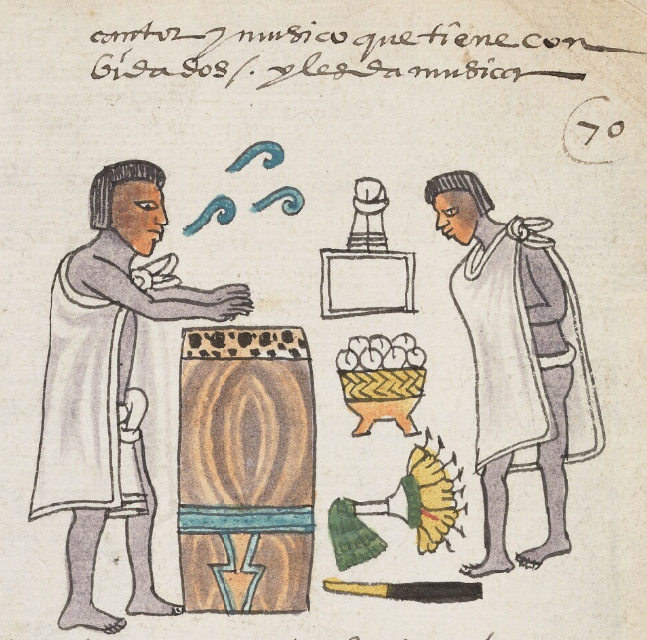cuicani (Mdz70r)
This iconographic example of a singer (cuicani) shows him standing, facing to our right, wearing a white cape and white loincloth, and hitting a standing drum (huehuetl). He is barefooted. Three speech scrolls come from his mouth, an indication of his song. His drum has what appears to be woodgrain (light gold and brown) with turquoise accents and a jaguar skin over the top (the part that is drummed). Interestingly, the skin of the singer is primarily gray, but his face is brown. His hair is cut with short bangs and the rest falls to just below his ear.
Stephanie Wood
The glyph (in Spanish) tells us that this is a singer and a musician. It is from this clue that we are referring to the person as a cuicani. The scrolls here for song are much less elaborate than the one used for the other cuicani from the Codex Mendoza. But the setting tells us that he is singing, which might obviate the need for a more detailed scroll.
Stephanie Wood
cantor y musico
cantor y músico
Stephanie Wood
c. 1541, or by 1553 at the latest
singing, songs, drumming, drums, cantar, cantando, canciones, la batería, el tamborileo, el tambor
cuicani, singer, https://nahuatl.wired-humanities.org/content/cuicani
Codex Mendoza, folio 70 recto, https://digital.bodleian.ox.ac.uk/objects/2fea788e-2aa2-4f08-b6d9-648c00..., image 150 of 188.
Original manuscript is held by the Bodleian Libraries, University of Oxford, MS. Arch. Selden. A. 1; used here with the UK Creative Commons, “Attribution-NonCommercial-ShareAlike 3.0 License” (CC-BY-NC-SA 3.0)








